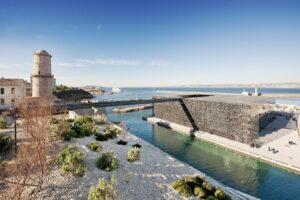Fodor's Expert Review Les Sites Antiques de Vaison-la-Romaine
Like a miniature Roman Forum, the ancient Quartier de Puymin, part of the largest archaeological site in France, spreads over a field and hillside in the heart of Vaison, visible in passing from the town's streets. Access to a garden, an archaeological museum, and the skeletal ruins of Roman villas below Vaison's ancient theater is via an entry booth across from the tourist office. Although it requires considerable imagination to visualize the structures as they once were, there are some poignant details, such as thresholds that still show the hinge holds for and scrape marks left by swinging doors.
Closest to the entrance, the foundations of the Maison des Messii (Messii House) indicate that it had a sumptuous design complete with a vast gentleman's library; reception rooms; an atrium with a rain-fed pool; a large kitchen (note the enormous stone vats); and baths with hot, cold, and warm water. To see the accoutrements of everyday Roman life, wander beneath... READ MORE
Like a miniature Roman Forum, the ancient Quartier de Puymin, part of the largest archaeological site in France, spreads over a field and hillside in the heart of Vaison, visible in passing from the town's streets. Access to a garden, an archaeological museum, and the skeletal ruins of Roman villas below Vaison's ancient theater is via an entry booth across from the tourist office. Although it requires considerable imagination to visualize the structures as they once were, there are some poignant details, such as thresholds that still show the hinge holds for and scrape marks left by swinging doors.
Closest to the entrance, the foundations of the Maison des Messii (Messii House) indicate that it had a sumptuous design complete with a vast gentleman's library; reception rooms; an atrium with a rain-fed pool; a large kitchen (note the enormous stone vats); and baths with hot, cold, and warm water. To see the accoutrements of everyday Roman life, wander beneath the cypress trees and amid the flowering shrubs of a formal garden to the Musée Archéologique Théo-Desplans. Here, items are displayed by theme: pottery, weapons, gods and goddesses, jewelry, and, of course, sculpture—including a complete figure of the emperor Claudius (1st century) and a strikingly noble nude Hadrian (2nd century).
Cross the park behind the museum to climb into the bleachers of the 1st-century Théâtre Romain, smaller than the one in Orange but also used today for concerts and plays. Across the parking lot is the Quartier de la Villasse, where remnants of a lively market town indicate main-street shops, public gardens, and grand private homes complete with floor mosaics. The most evocative image of all is in the thermes (baths): a neat row of marble-seat toilets lined up over a raked trough that instantly rinsed waste away.
The best way to understand the sites is with a self-guided audio tour (€2, available at the museum). Guided tours led by certified docents are also a possibility, though availability, duration, prices, and themes vary. Check ahead with the museum or the tourist board.
READ LESS





